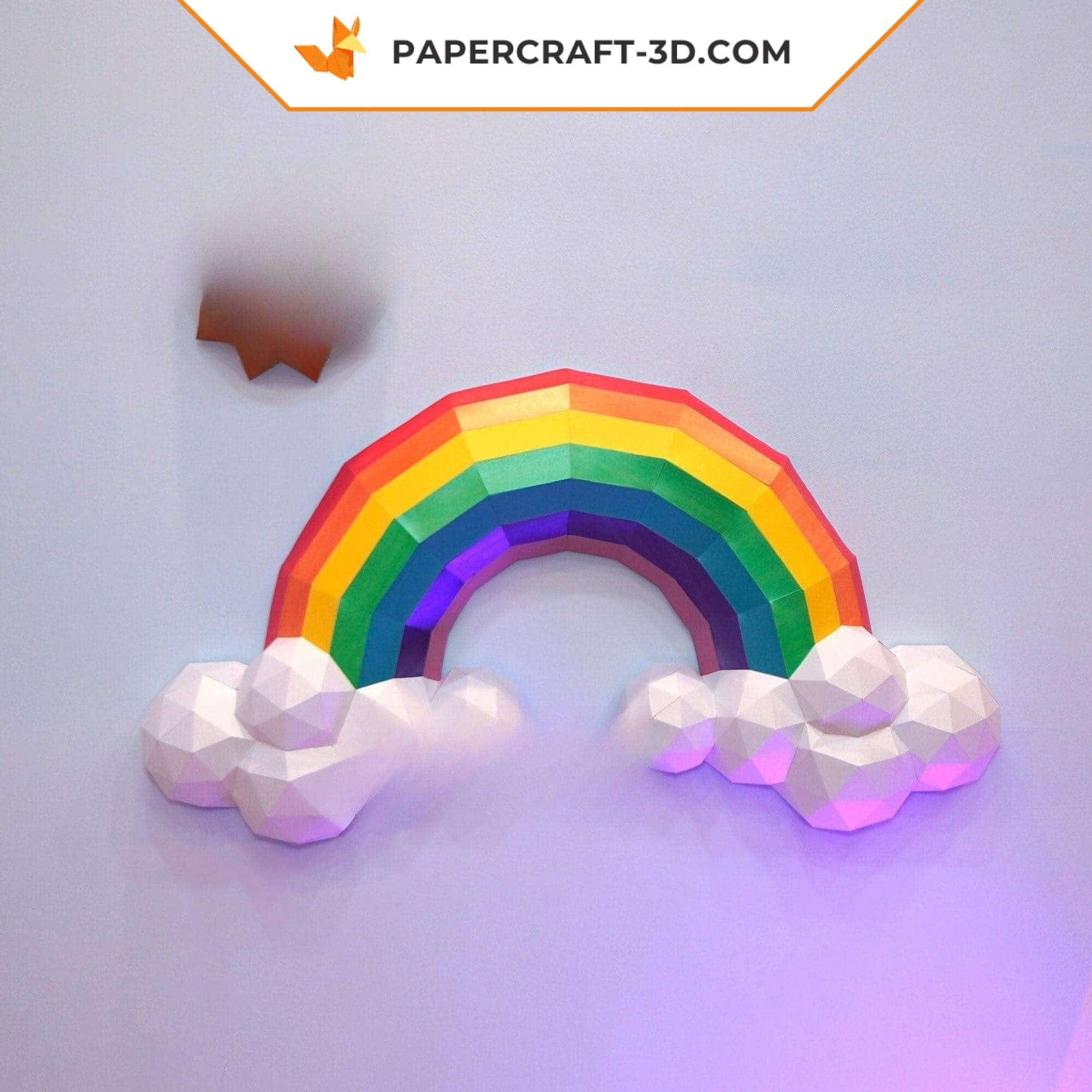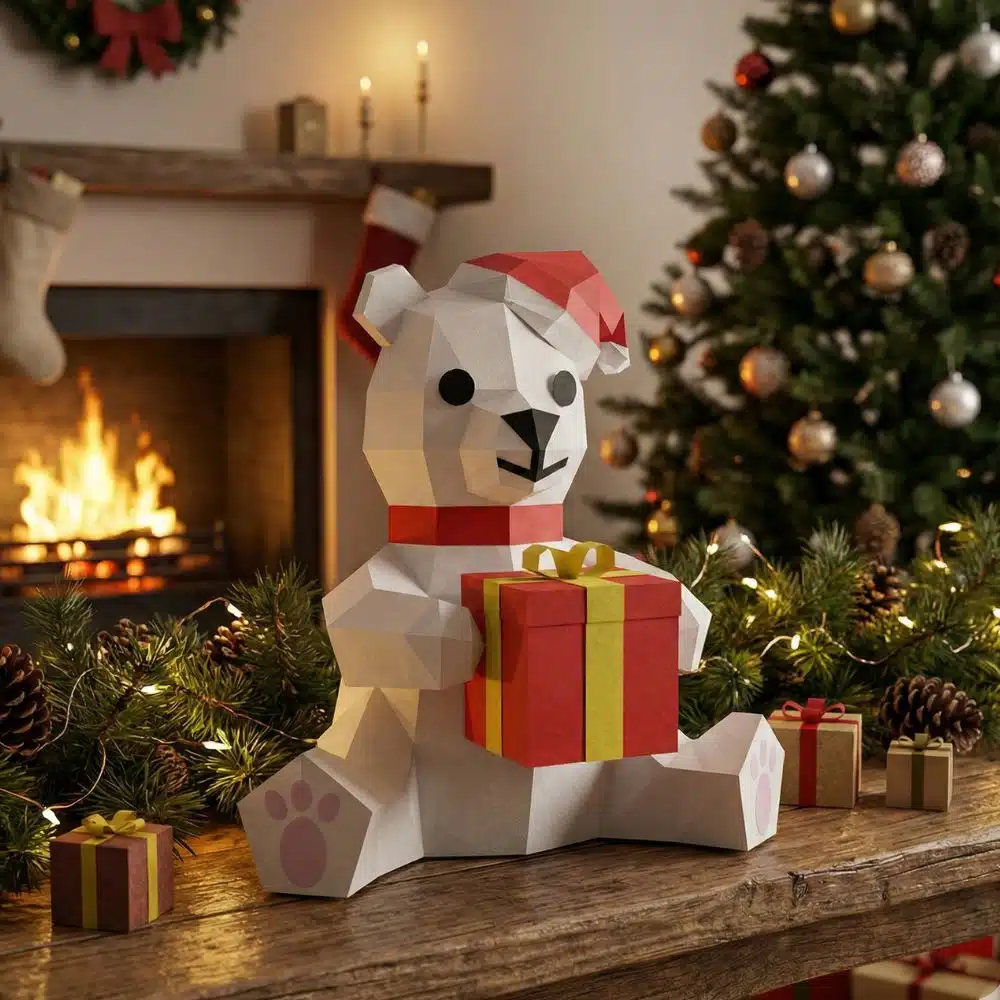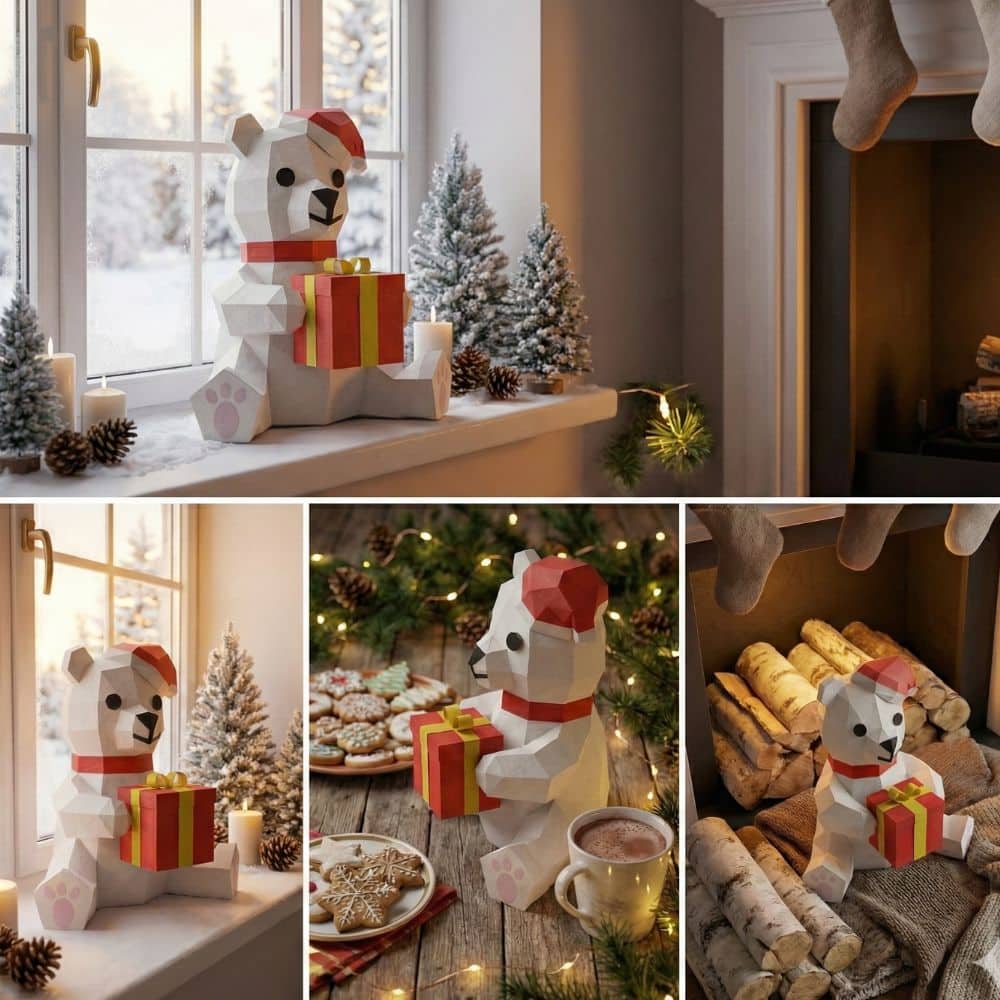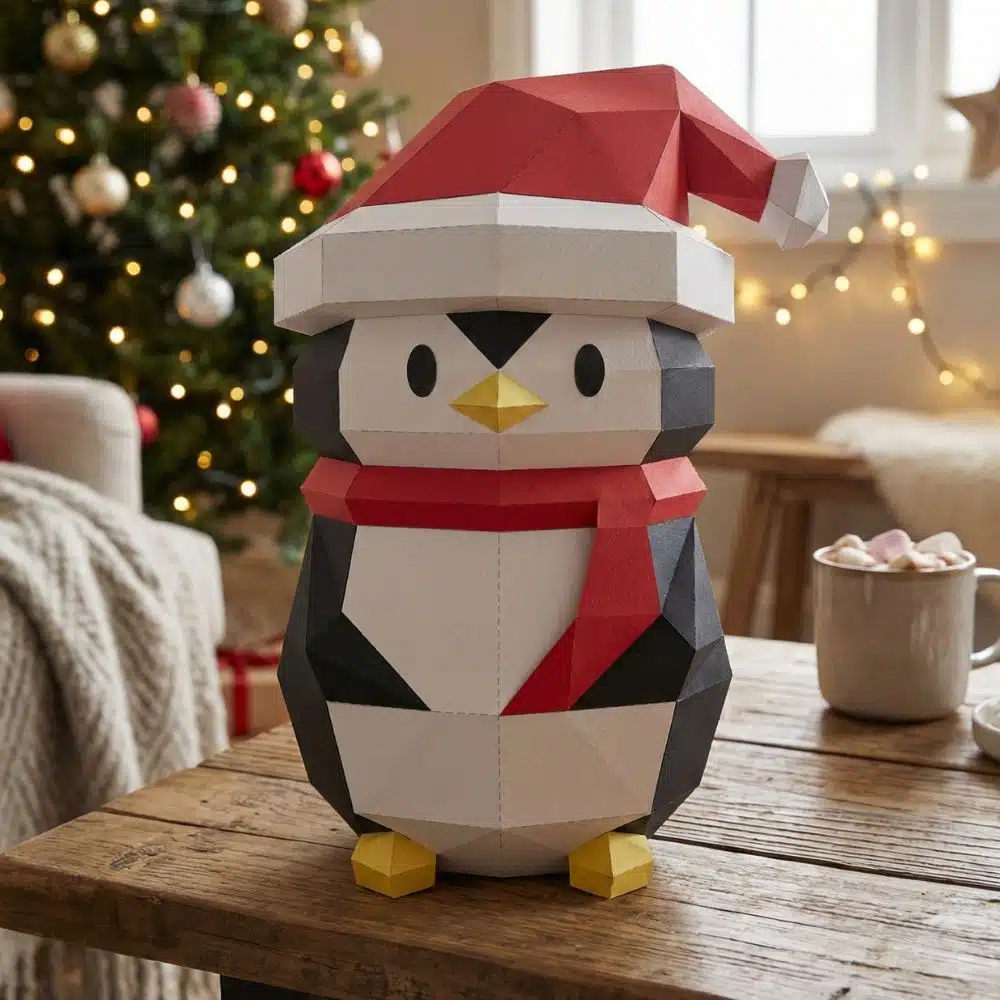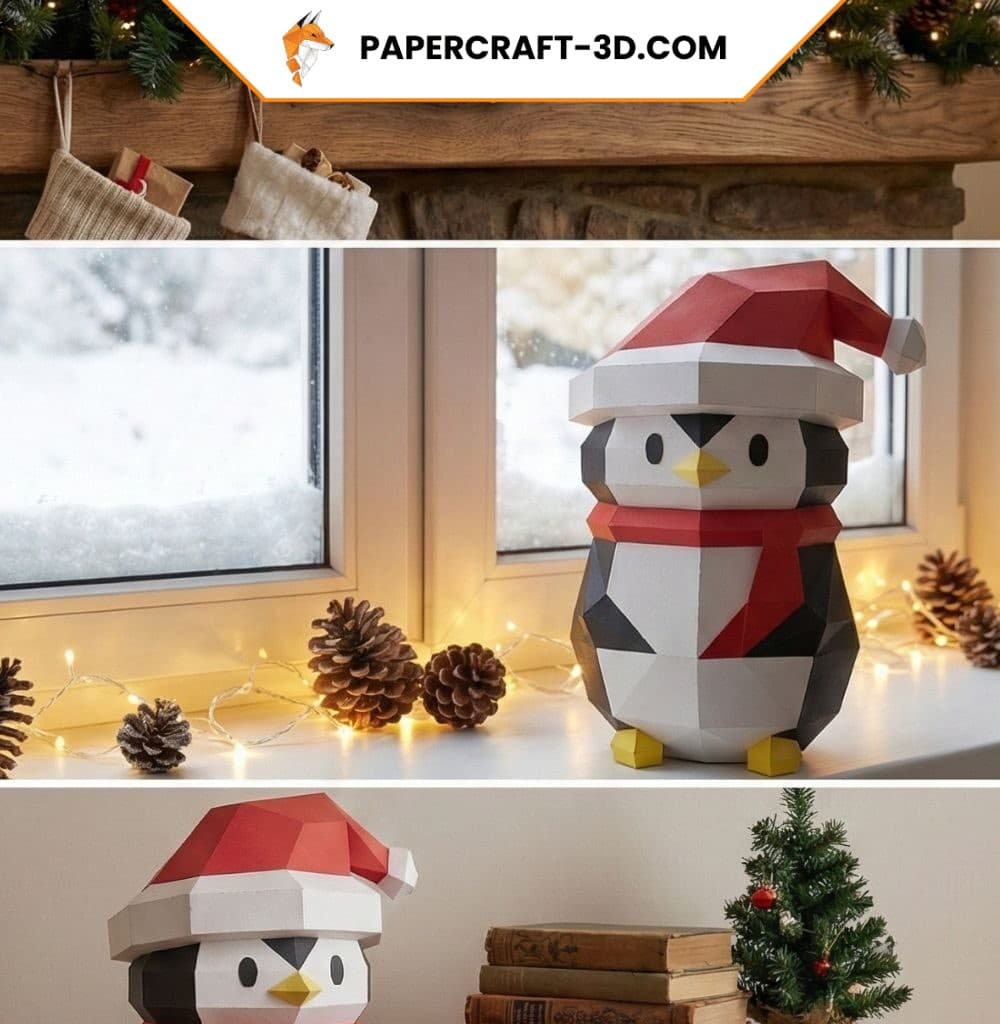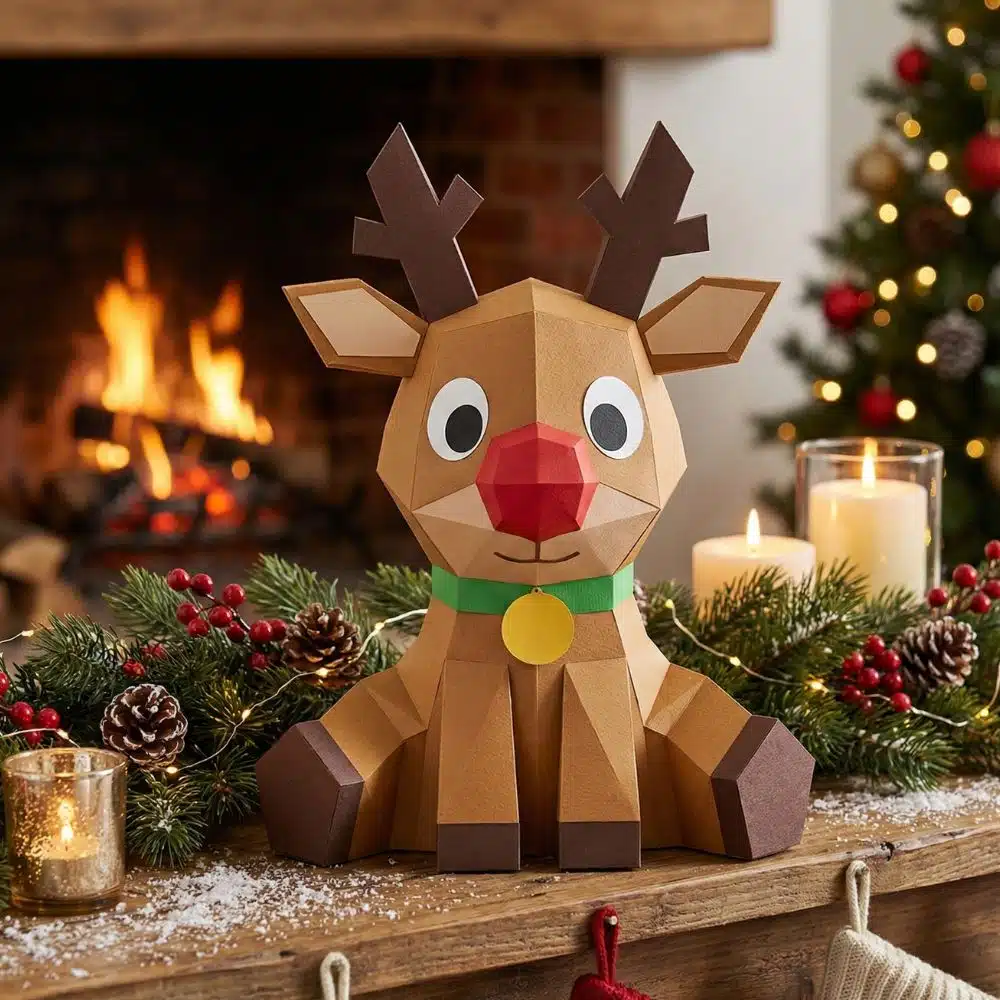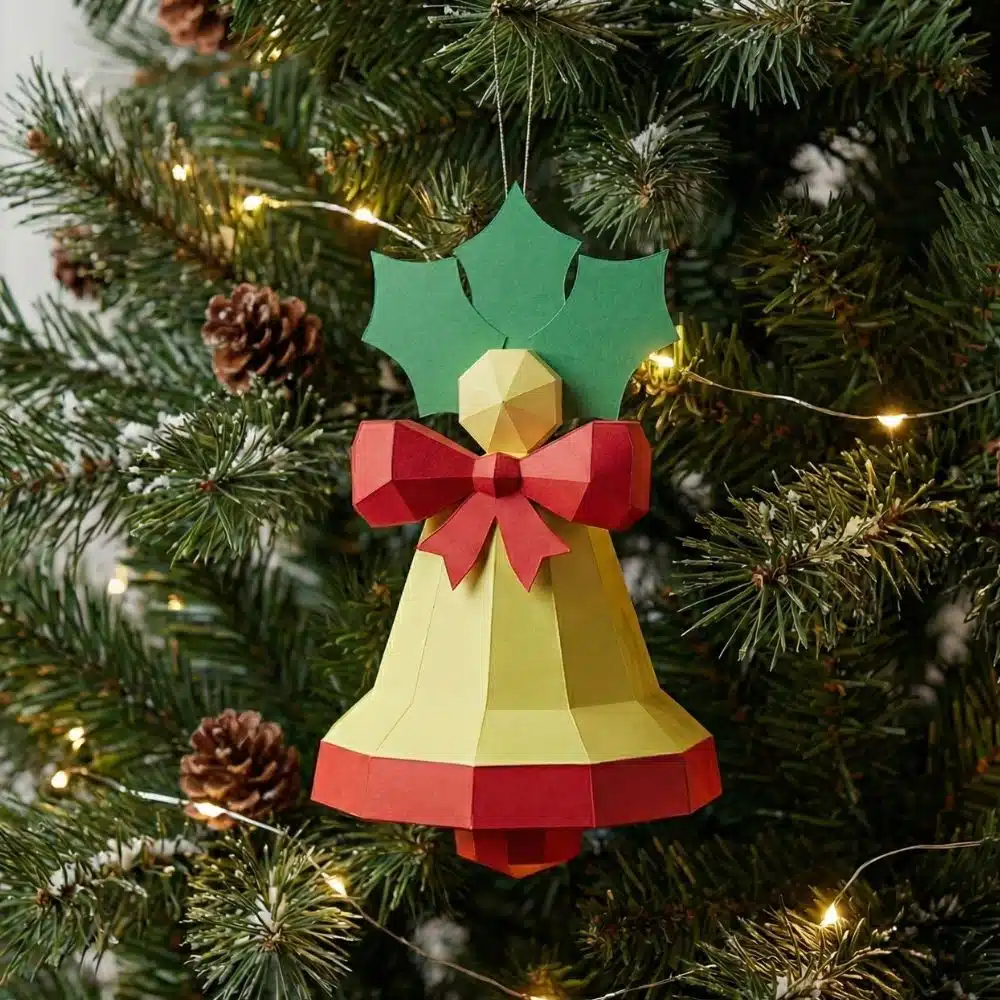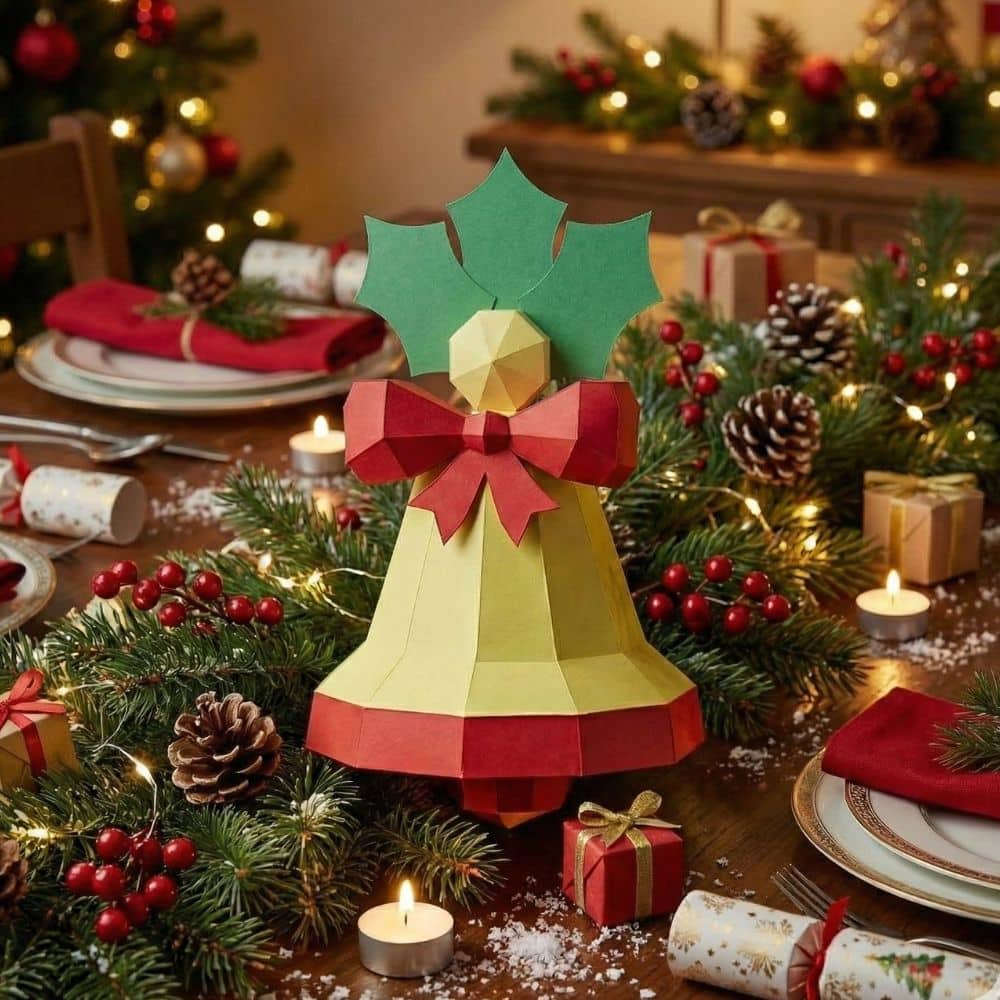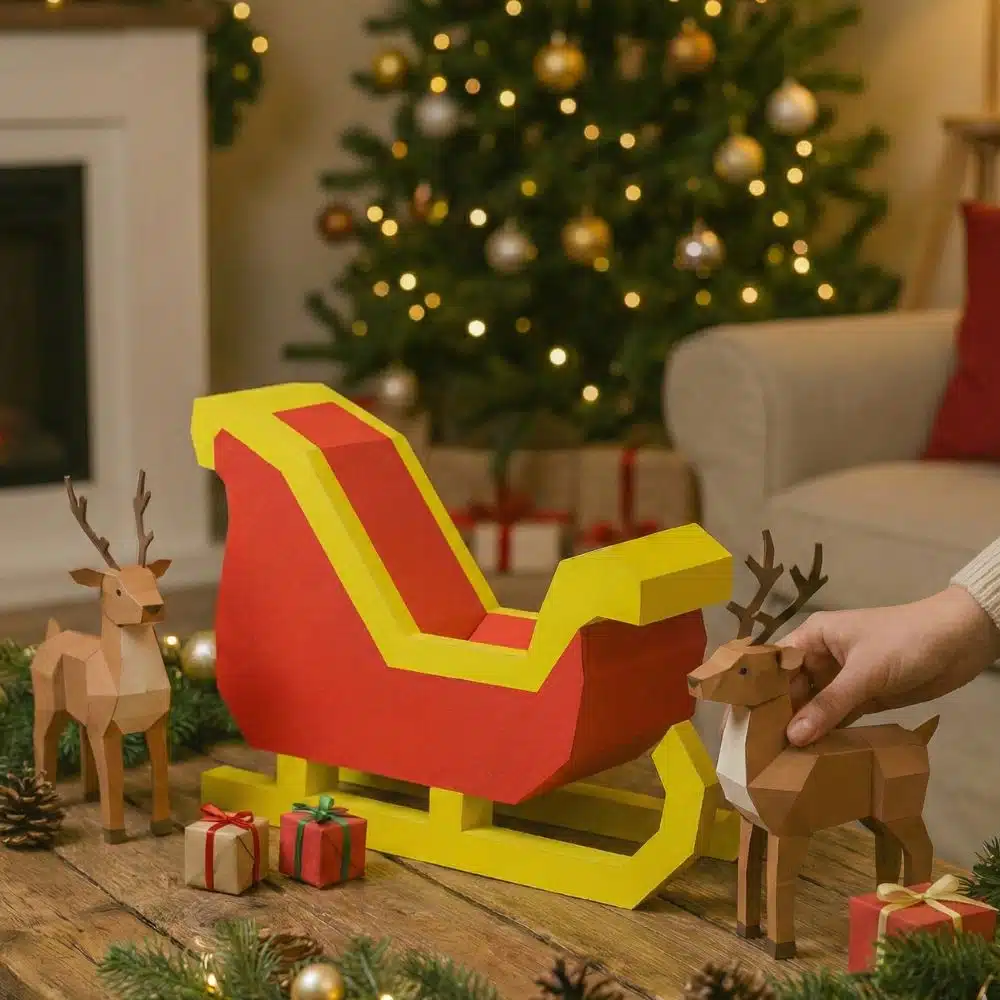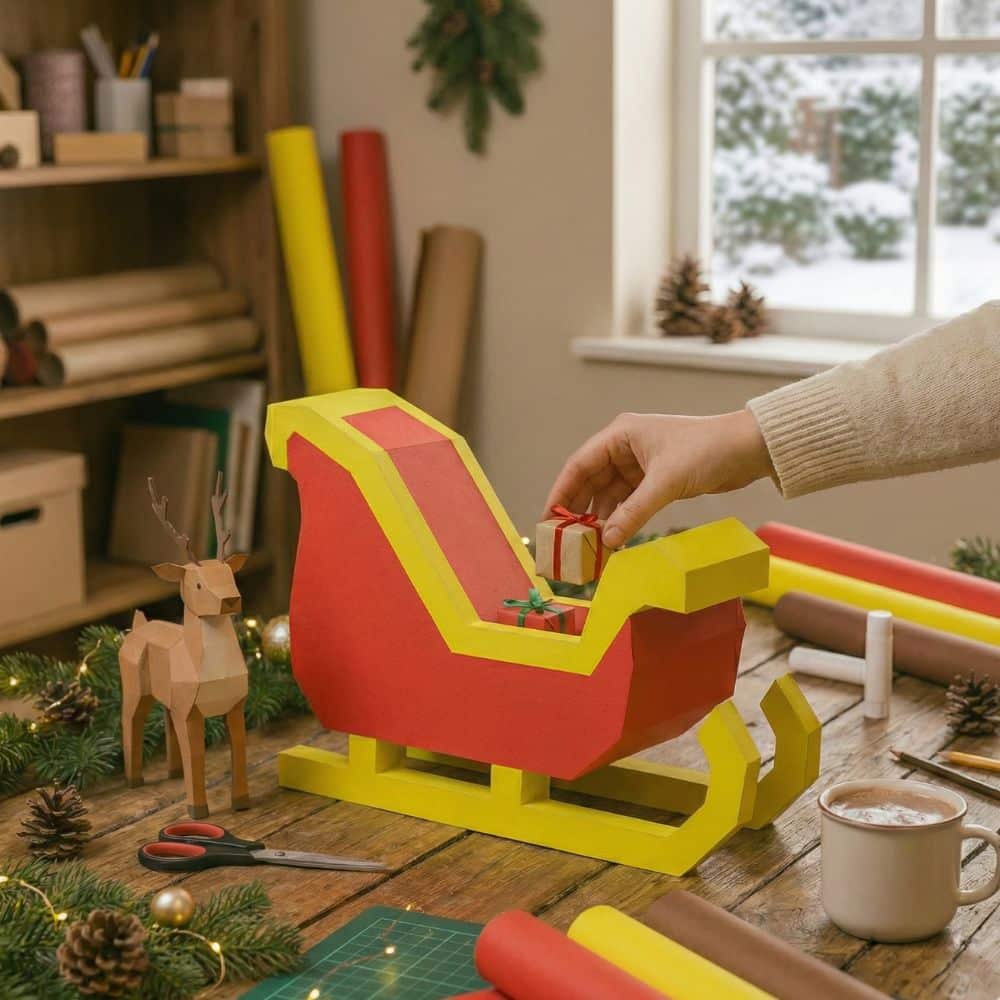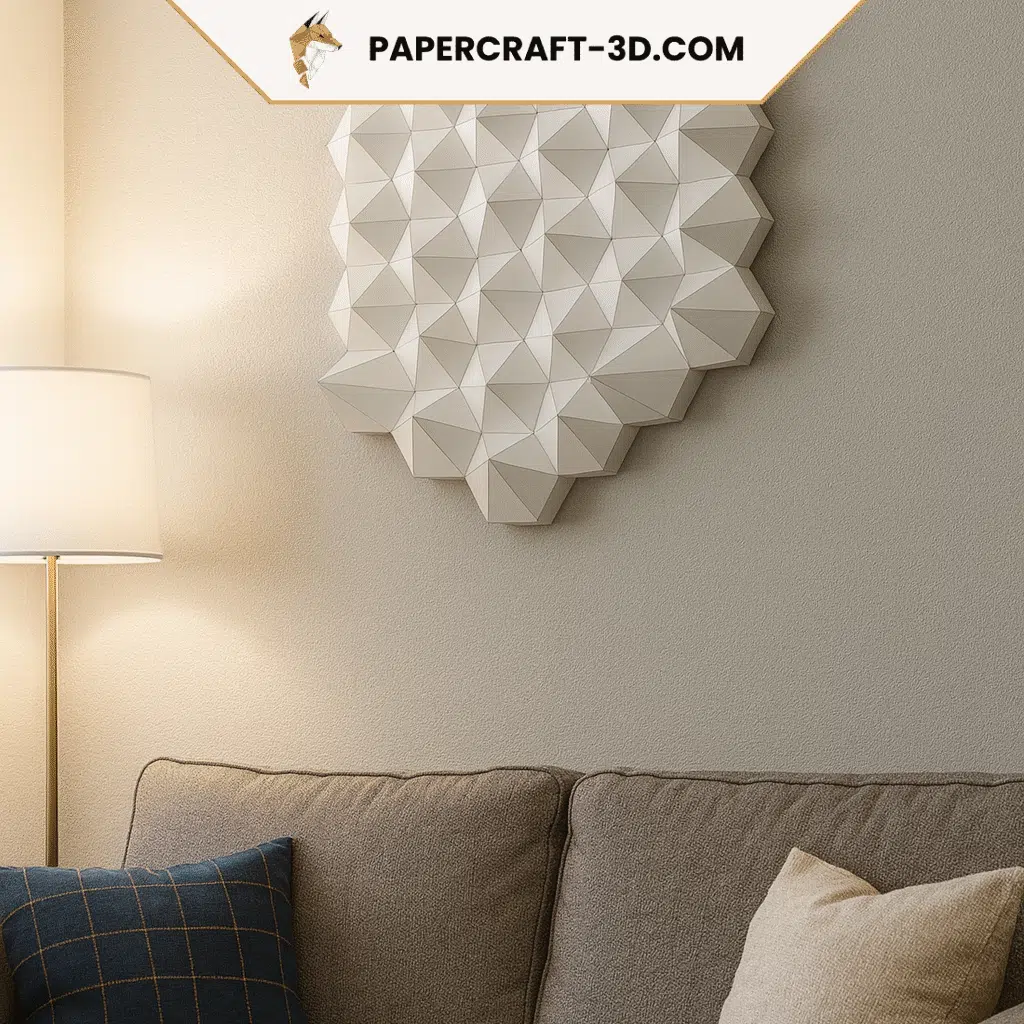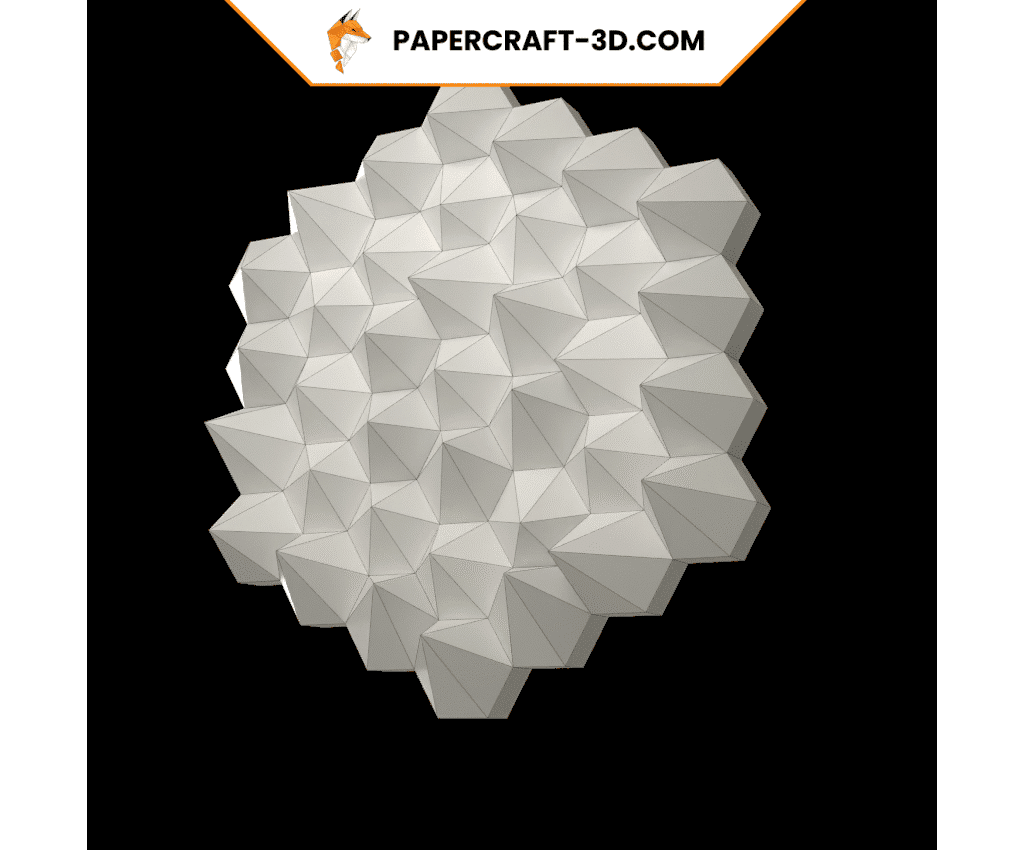Nursery assistants play a crucial role in the development of toddlers. To create an environment where children feel comfortable and can explore safely, it’s essential to opt for carefully thought-out decoration. In this article, we offer some inspiring ideas for decorating your childcare space, with a particular focus on 3D origami paper papercraft.
Why choose 3D paper origami papercraft?
3D paper origamipapercraft is a creative art form that transforms simple sheets of paper into beautiful three-dimensional objects. This type of decoration offers several advantages for child-friendly spaces. Firstly, papercraft is relatively easy to make, and requires no expensive materials. What’s more, you can fully personalize the decoration to suit your own preferences or those of your children. The bright colors and varied shapes captivate the little ones’ attention while stimulating their imagination.
The benefits of papercraft for children’s development
Using papercraft as a decorative element in a mam has a number of benefits for children’s development. Through this manual activity, little ones improve their dexterity and hand-eye coordination. What’s more, participating in the creation of these objects gives them a sense of pride and boosts their self-confidence. Another significant advantage is the ecological aspect of papercraft. Using mainly recyclable materials, this practice encourages children to adopt eco-responsible gestures from an early age.
Integrate papercraft creations into your space
To successfully integrate papercraft into your home decor, start by selecting models that are suitable for children’s skills. There’s no need to aim for works that are too complex; the idea is above all to have fun creating together. Here are a few suggestions to get you started:
- Origami animals brighten up shelves and desks
- Colorful mobiles suspended from the ceiling to catch the eye
- Paper flower garlands to liven up walls
- Little characters to encourage invented stories
Playground layout
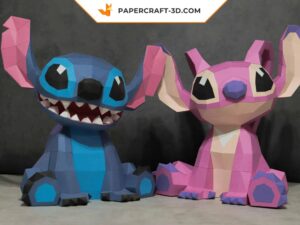
The correct layout of the play area is essential to guarantee children’s safety and comfort. First important point: clearly delimit the different areas for play, rest and meals. Make sure that the furniture is adapted to the size of the children. For example, low tables and chairs at their height will facilitate their daily activities. Make sure that all furniture is stable and free of sharp edges to avoid accidents.
Essential furniture and accessories
To enrich the play environment, consider adding specific furniture such as a motor skills mat. This will enable children to develop their physical skills in complete safety, while adding a touch of color to the room. Don’t forget accessories such as multicolored cushions and small bookcases. These not only add to the decor, but are also practical for organizing toys and other everyday objects.
Wall decoration ideas
Walls are an excellent medium for expressing your creativity. Using 3D papercraft, you can create themed murals that will delight children. Imagine nature scenes with trees and animals in relief, or imaginary landscapes populated by fantastic creatures. Another idea is to install interactive boards where children can hang their own papercraft works of art. This encourages children to play an active part in decorating the space, while enhancing the value of their creations.
Tips for a harmonious children’s bedroom
A child’s bedroom should be a soothing place that invites both rest and play. To achieve this, opt for a palette of soft colors mixed with brighter touches to liven things up. Vinyl wall stickers can be a quick and effective solution for personalizing the bedroom without the need for major work. Choose motifs in line with children’s interests: animals, stars, vehicles, etc.
Organization and storage
A well-organized storage space plays a major role in maintaining a serene, orderly atmosphere. Choose decorative containers that are easily accessible to children, so that they can put away their toys themselves after each use. Choose modular storage units that grow with the child’s age. Adjustable shelves or stackable bins allow you to adapt space to the growing needs of little ones, while optimizing every available corner.
Combining aesthetics and practicality
Combining aesthetics and functionality can seem like a real headache, especially when dealing with a children’s room where needs are constantly changing. Think multifunctional furniture such as beds with built-in drawers or chests of drawers that double as changing tables. These space-saving solutions are also stylish.
Choosing the right motor skills equipment
The choice of motor skills equipment is essential to support children’s physical development. Choose sturdy, safe equipment that’s easy to integrate into your home’s décor. Foam modules are ideal for creating a toddler-friendly motor zone. Often colorful, they provide visual stimulation while being soft and safe for gross motor exercises.
Create an interactive play area
In this area, install elements that encourage free movement and sensory discovery. A motor course featuring tunnels, wooden bridges and obstacles will help little ones improve their balance and coordination while having fun. Let’s not forget the importance of a ball pit or foam pool. These accessories provide hours of entertainment and encourage socialization between children, while subtly working on their spatial perception.
Safety first
Whatever the decor or motor skills equipment chosen, safety must always be the top priority. Regularly check the condition of furniture and accessories to prevent any potential hazards. Avoid objects that are too small to be swallowed, and make sure all surfaces are free of sharp edges or protruding parts.
Tips for a successful layout in a childminder’s home (mam)
Creating a welcoming, functional environment in the home requires organization and attention to detail. Follow these tips to maximize the efficiency of your space:
Planning and zoning
Start by drawing up a clear plan of the desired layout. Identify the different zones (resting, playing, eating, activities) and make sure they are logically arranged. Using light barriers or furniture as dividers can help structure the space while maintaining visual harmony. Provide soft, quiet corners where children can retreat to recharge their batteries when they feel tired or need some peace and quiet. Ideally, these areas should be equipped with soft mattresses, blankets and reassuring cuddly toys.
Children take part in decorating
Involving children in decorating their environment contributes to their well-being and development. Invite them to choose colors, themes or even co-create decorative papercraft objects. This collaborative approach reinforces their sense of belonging and contribution. Small, regular creative workshops can become special moments when everyone adds their personal touch to the shared space. By working together, adults and children strengthen their bonds while embellishing their living environment. In short, decorating for a childminder must combine aesthetics, functionality and safety. Integrating 3D paper origami papercraft elements into the decor helps stimulate children’s creativity, while creating a warm, personalized atmosphere. Whether you’redesigning play areas, rest areas or even bedrooms, every detail counts in creating an environment conducive to the development and well-being of the youngest children.





